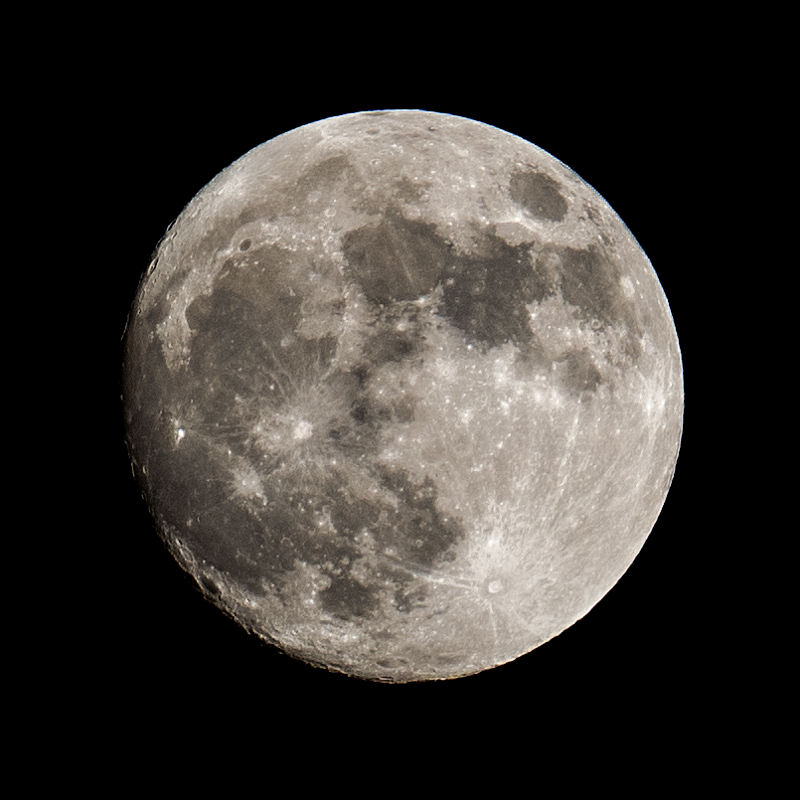 |
| Our Moon |
| Sigma 100-400mm lens, at 400mm, on Sony A7iii. Total exposure time: 1/400th of a second at ISO 200 :) |
| I'm losing interest in staying out for hours in the cold. [11/28/2020] |
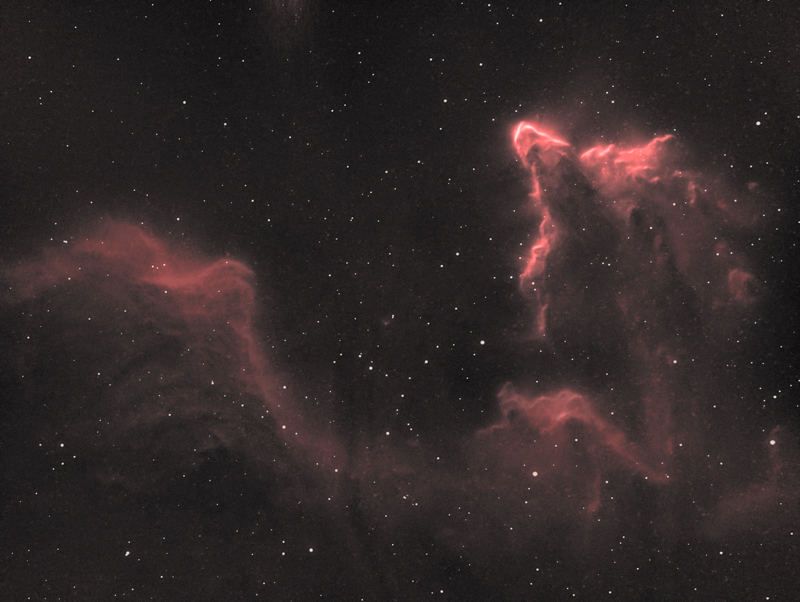 |
| IC 63 Ghost Nebula |
| Taken with Celestron Edge 8" Schmidt-Cassegrain telescope (reduced to f/7) and the usual nebula combination of ZWO ASI1600MM and H-Alpha filter. |
| 4.4 hours total exposure time [11/6/2020]. |
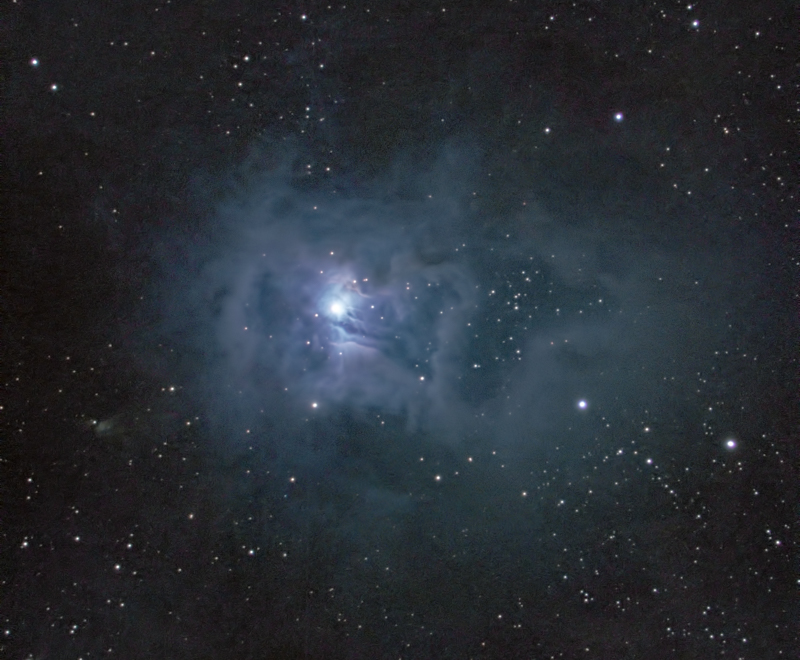 |
| NGC 7023 Iris Nebula |
| Taken with Celestron Edge 8" Schmidt-Cassegrain telescope (reduced to f/7) and unlike most of the nebula images, this was taken with the ZWO ASI533MC camera. |
| This nebula has a lot of natural blue light that the color sensor of the 533 captures quite well. |
| 2.5 hours total exposure time [8/8/2020]. |
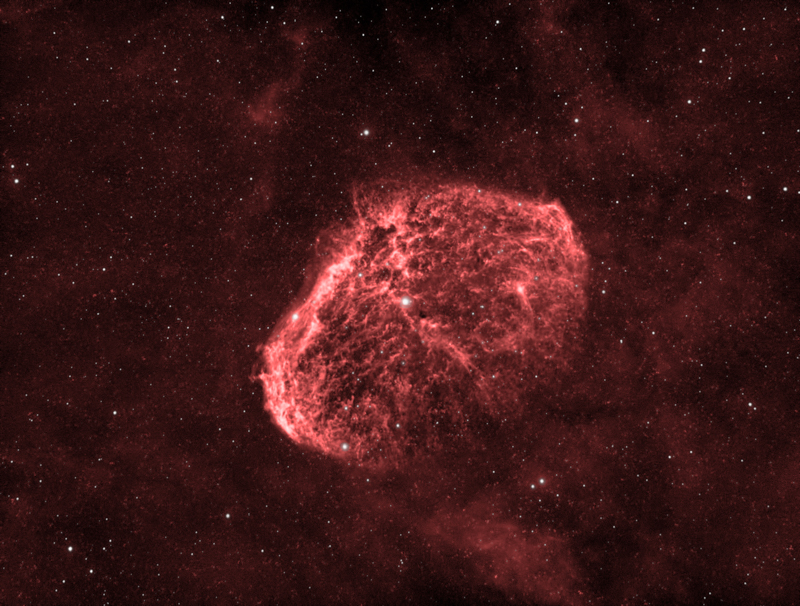 |
| NGC 6888 Crescent Nebula |
| Taken with Celestron Edge 8" Schmidt-Cassegrain telescope (reduced to f/7) and ZWO ASI1600MM, a cooled monochrome astrophotography camera, with an H-Alpha filter |
| 2.8 hours total exposure time [7/2/2020]. |
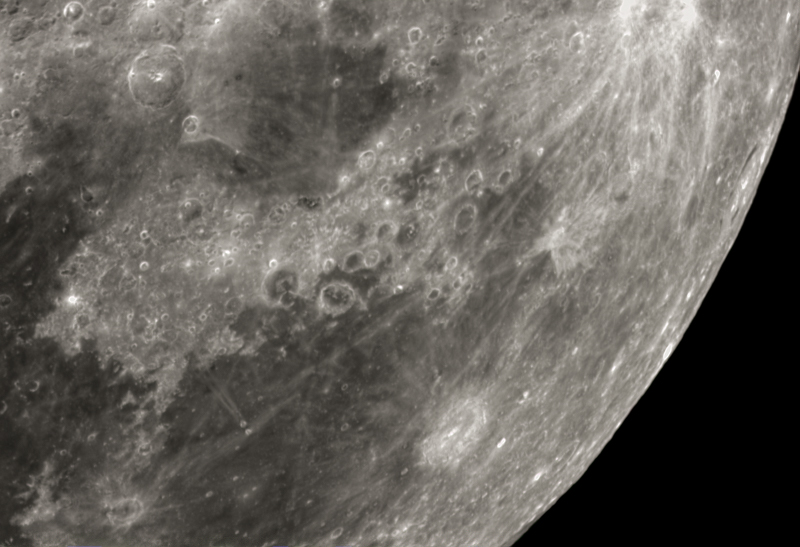 |
| Lower right section of our moon |
| Taken with Celestron Edge 8" Schmidt-Cassegrain telescope (2032mm f/10) and ZWO ASI178MC, a small format, uncooled, astronomy camera. |
| Stack of the best 15, 0.05sec frames, from a run of 100. |
| No long hours of integration required with the moon, but I still need to increase the time to a minute or two. [5/31/2020]. |
 |
| M51 Whirlpool Galaxy - One Year On |
| The second target from this years Galaxy Season |
| Taken with Celestron Edge 8" Schmidt-Cassegrain telescope (reduced to f/7) and ZWO ASI533MC, a cooled, color, dedicated astrophotography camera. |
| 3.7 hours total exposure time [5/13/2020]. |
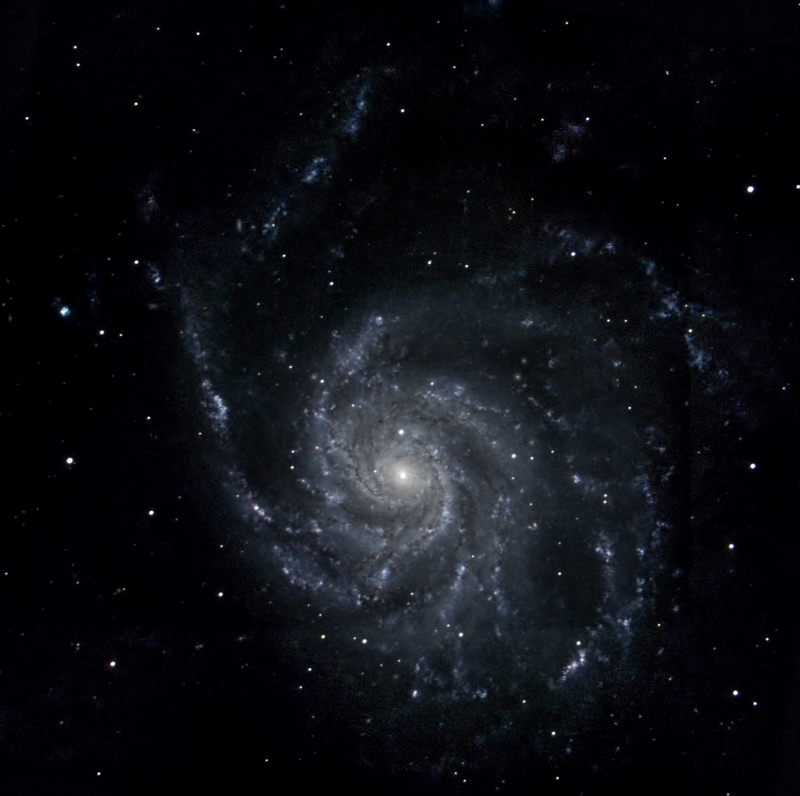 |
| M101 Pinwheel Galaxy |
| Galaxy season has officially begun. |
| Taken with Celestron Edge 8" Schmidt-Cassegrain telescope (reduced to f/7) and ZWO ASI533MC, a cooled, color, dedicated astrophotography camera. |
| 4.5 hours total exposure time over two nights [4/1/2020 and 4/20/2020]. |
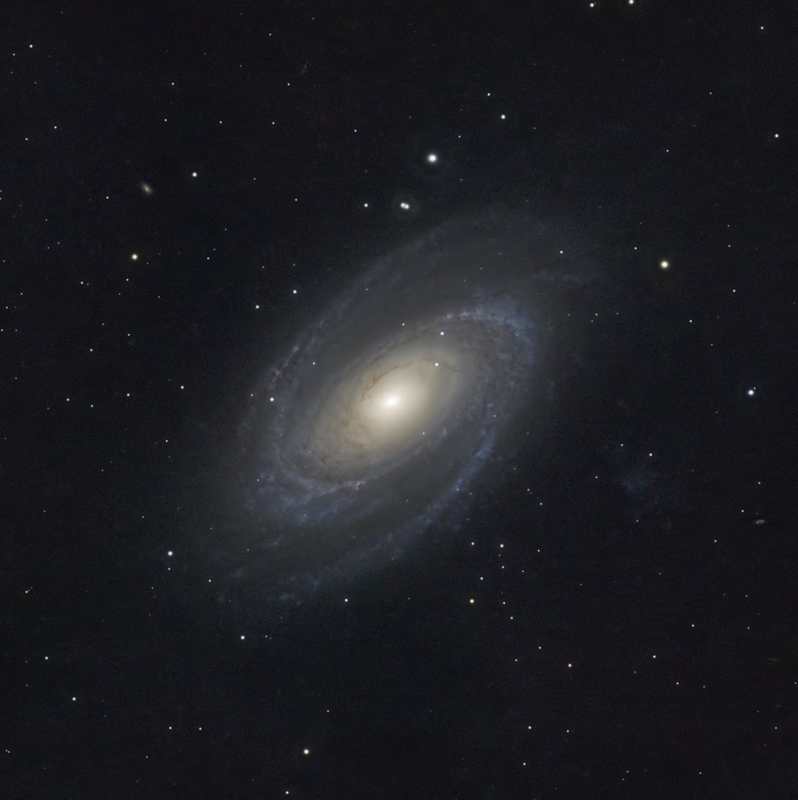 |
| M81 Bode's Galaxy, a preview of comming attractions as galaxy season is almost here. |
| Taken with Astro-Tech AT115EDT 805mm f/7 refractor telescope and ZWO ASI533MC. |
| 3.5 hours total exposure time [3/25/2020]. Another very good night for astrophotography. |
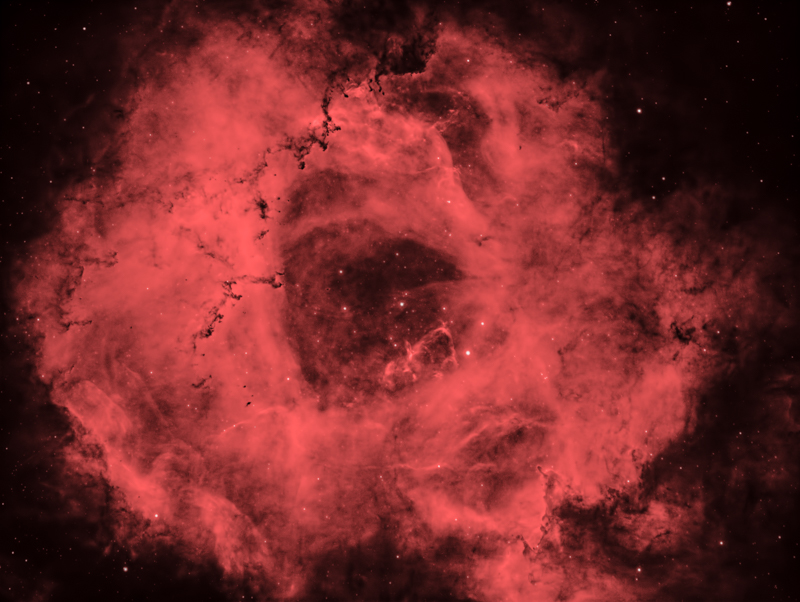 |
| Rosette Nebula (NGC 2244) w/Astro-Tech AT115EDT 805mm f/7 - 100 minutes total integration time with H-alpha filter [3/7/2020] |
| An almost perfect night for astrophotography. Dead calm and very clear. |
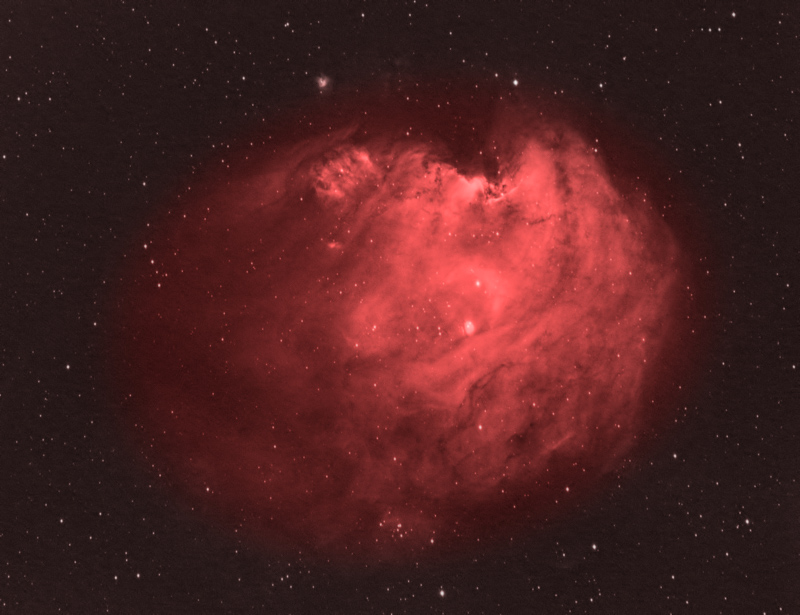 |
| Monkey Head Nebula (NGC 2174) w/Astro-Tech AT115EDT 805mm f/7 - 1 hour total integration time with H-alpha filter [2/21/2020] |
| First light with Astro-Tech AT115EDT refractor telescope. Not much integration time at f/7 :( |
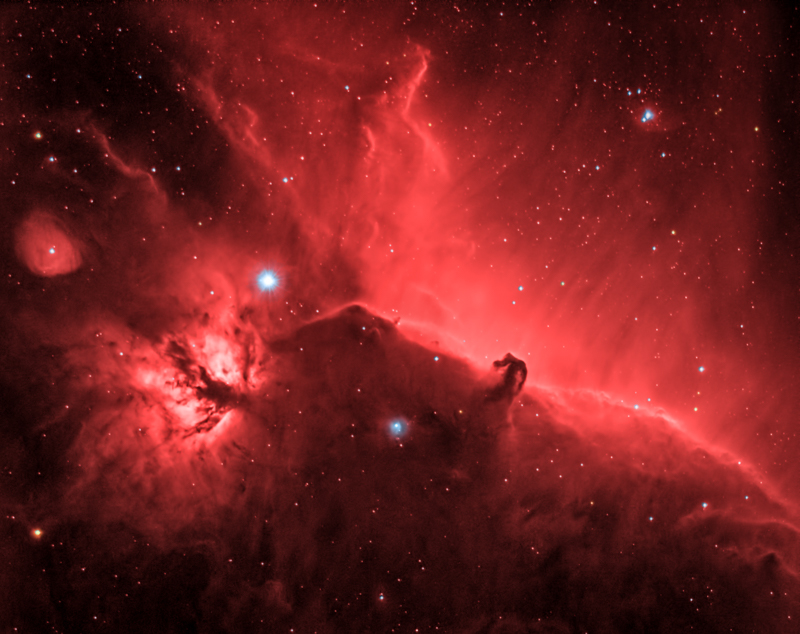 |
| Flame Nebula (NGC 2024) and Horsehead Nebula (IC 434) w/600mm f/4 - 2 hours total integration time with H-alpha filter [2/2/2020] |
| First try using RGB to correct star colors. Only a minute each with Red, Green, and Blue filters. That data is only used to overlay the color on the H-alpha luminance data. You can see that some of the stars are actually blue or yellow. |
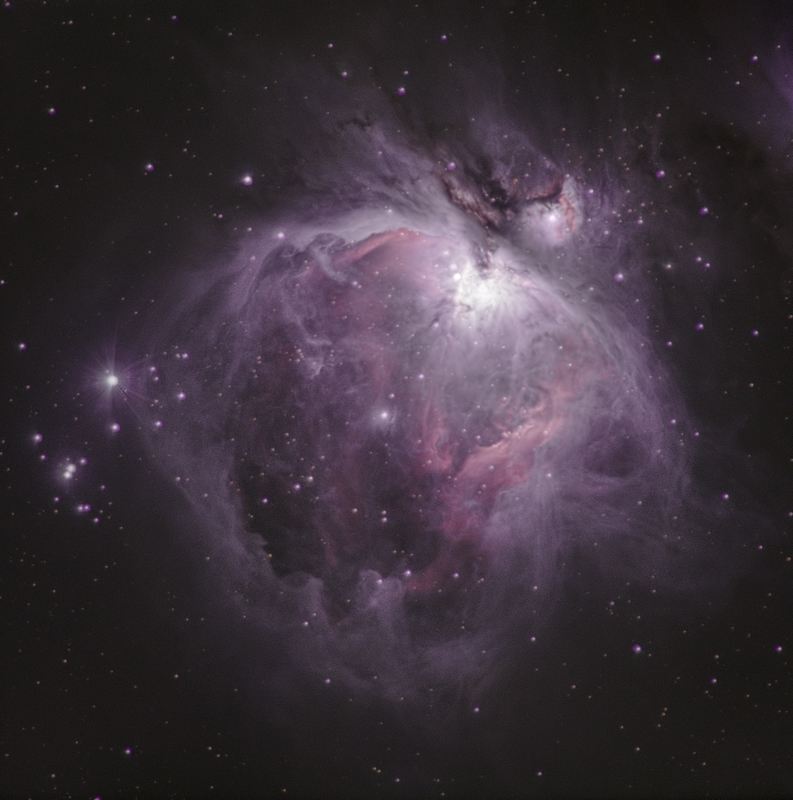 |
| M42 Orion Nebula w/300mm f/4. |
| First light with the ZWO ASI533MC, a cooled, color, dedicated astrophotography camera. |
| Only 30 minutes total integration time [12/23/2019] |
| Somewhat of an improvement over last March's version, which was my first astrophotograph. |
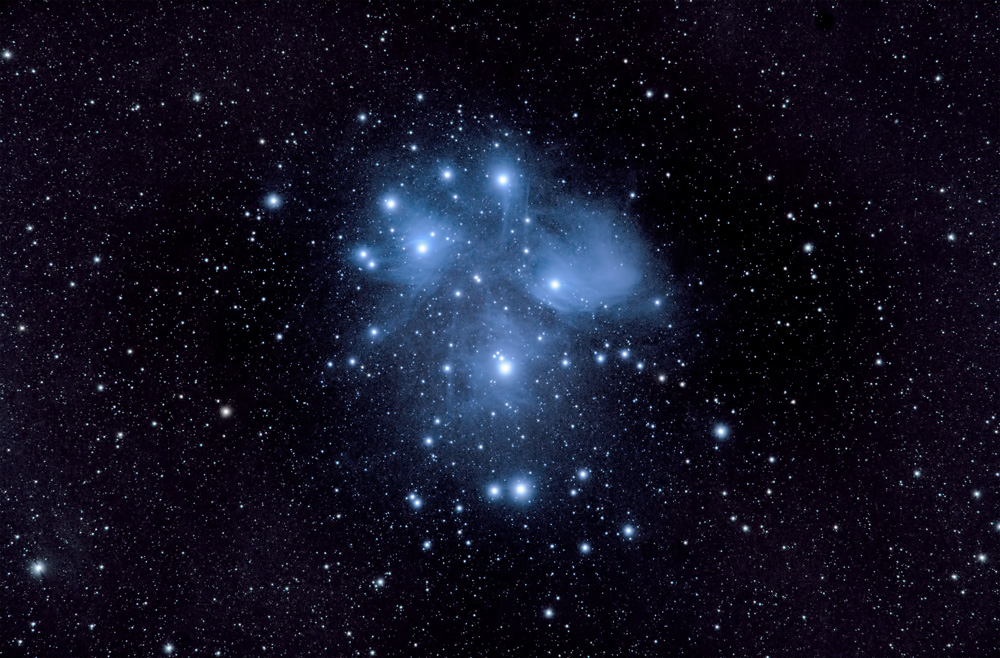 |
| M45 The Pleiades w/300mm f/4 + 1.4x TC (420mm f/5.6) - 1 hour total integration time [12/21/2019] |
| The brightest star cluster visible to us, it can be seen without the aid of binoculars or a telescope. |
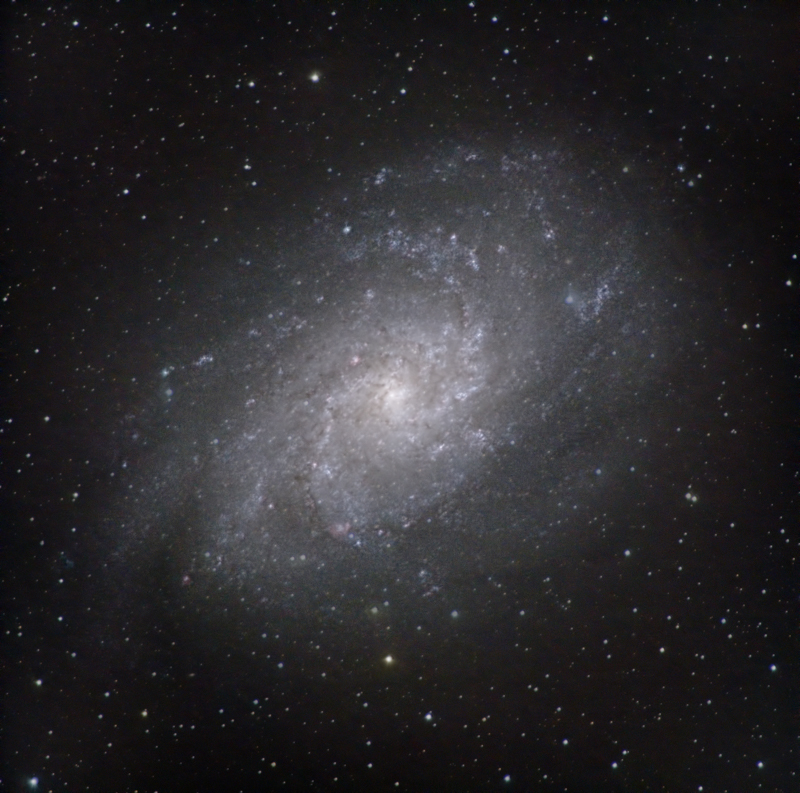 |
| M33 Triangulum Galaxy w/600mm f/4 - 2 hours total integration time [12/23/2019] |
| I'm going to need a power outage covering a 5 mile radius around my house, on a moonless night, when there are no clouds, and I'm out in my driveway taking pictures, to get a good shot of one of these small galaxies. |
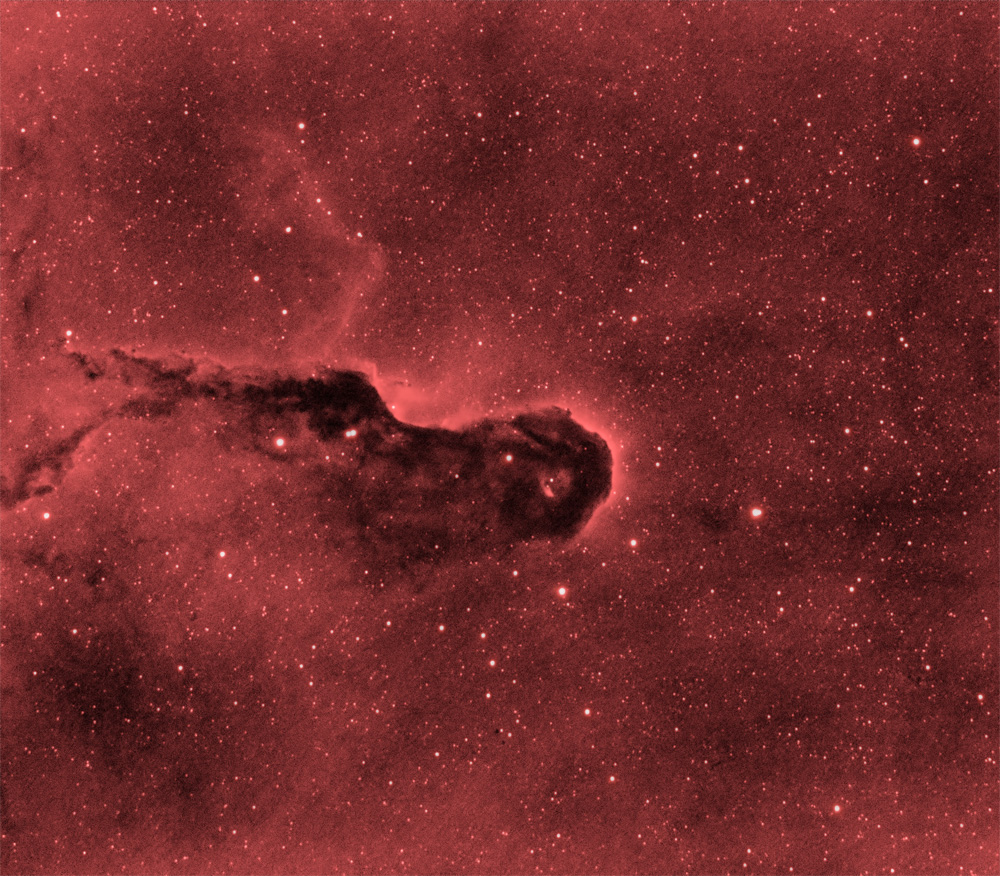 |
| IC1396 'Elephant Trunk Nebula' (H-alpha only) First Light with the Edge HD Schmidt-Cassegrain 8 inch telescope (configured at 1400mm f/7) |
Schmidt-Cassegrain design is a hybrid reflector(mirror)/refractor(lens) design.
The Edge HD design goes a step further by flattening the focal plane, necessary for perfect focus all the way to the edge of the camera sensor.
Much higher power (5x more magnification than the lens used for the Heart Nebula above this one).
Technical junk follows: This image exposes each camera pixel to 0.5 arc-seconds of space, while the Heart image has a scale of 2.7 arc-seconds per pixel.
For perspective, one arc-second is about the width of a baseball... 10 miles away.
Another example: The tiny bright dot that is Venus (the 'Morning Star') averages about 30 arc-seconds.
The extra magnification comes at a cost of gathering less light (almost 4x less light) even while having nearly 50% more diameter.
It also makes tiny errors in tracking much more visible :( |
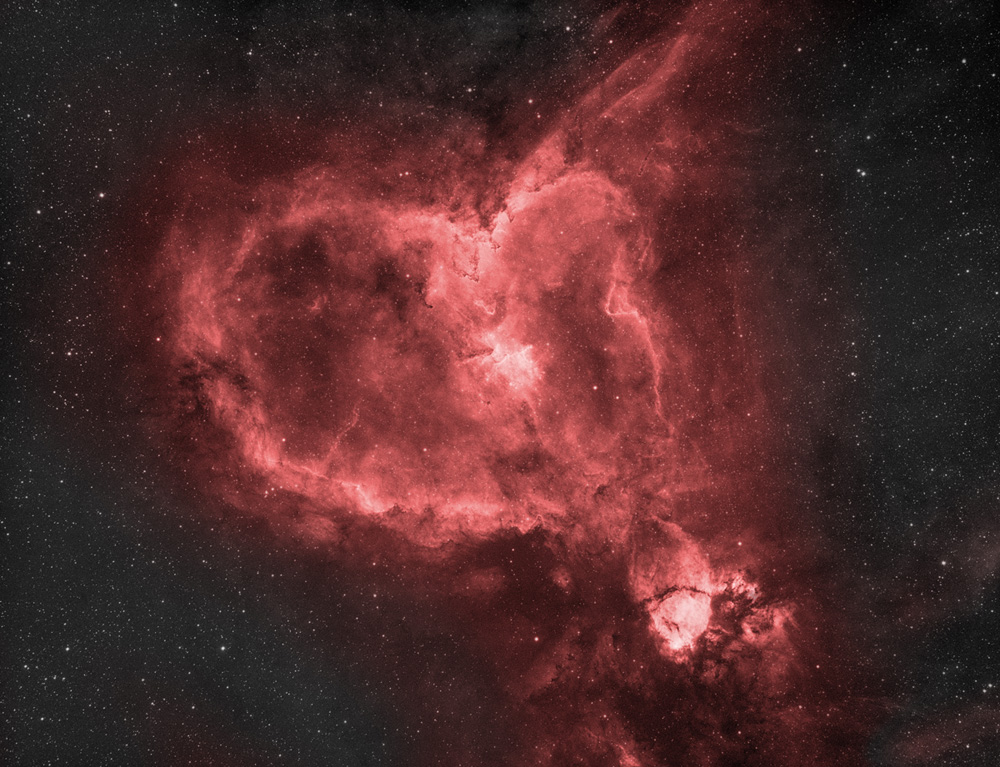 |
| IC1805 'Heart Nebula' (H-alpha only) w/300mm f/4 - 3.5 hours total integration time [10/9/2019] |
| Just in time for an anniversary present :) |
 |
| Nikon D500 version of M31 Andromeda Galaxy w/300mm f/4 - 2.5 hours total integration time [10/20/2019] |
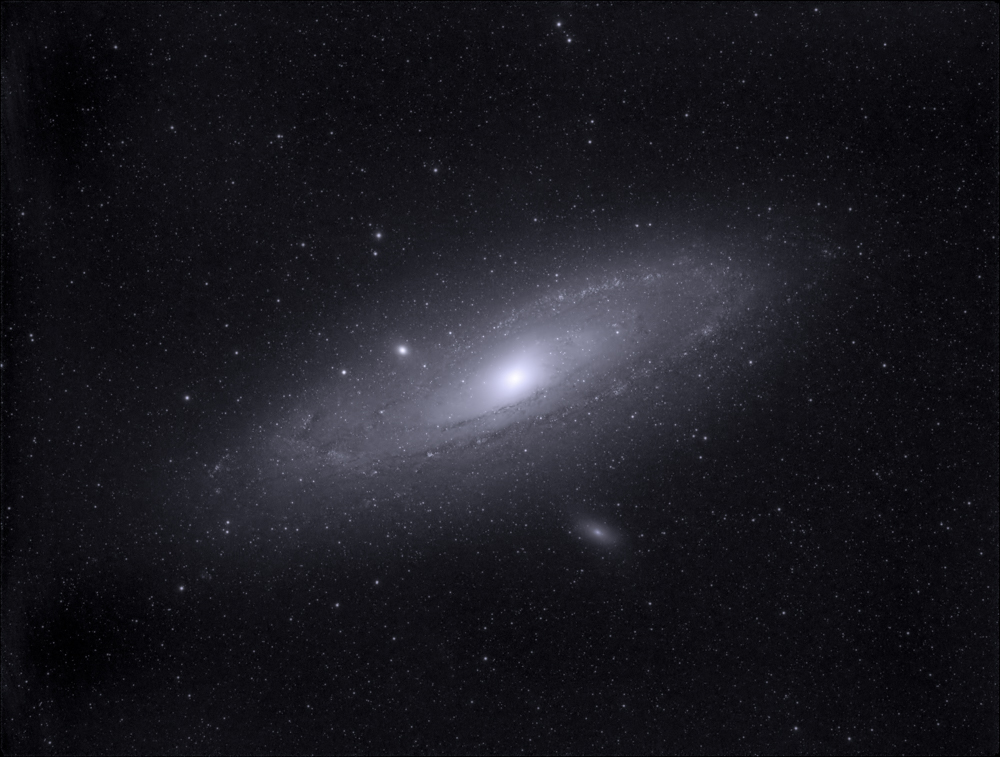 |
| M31 Andromeda Galaxy w/300mm f/4 - 3.5 hours total integration time [8/29/2019] |
| Also includes M110 Galaxy (The much smaller one below Andromeda) |
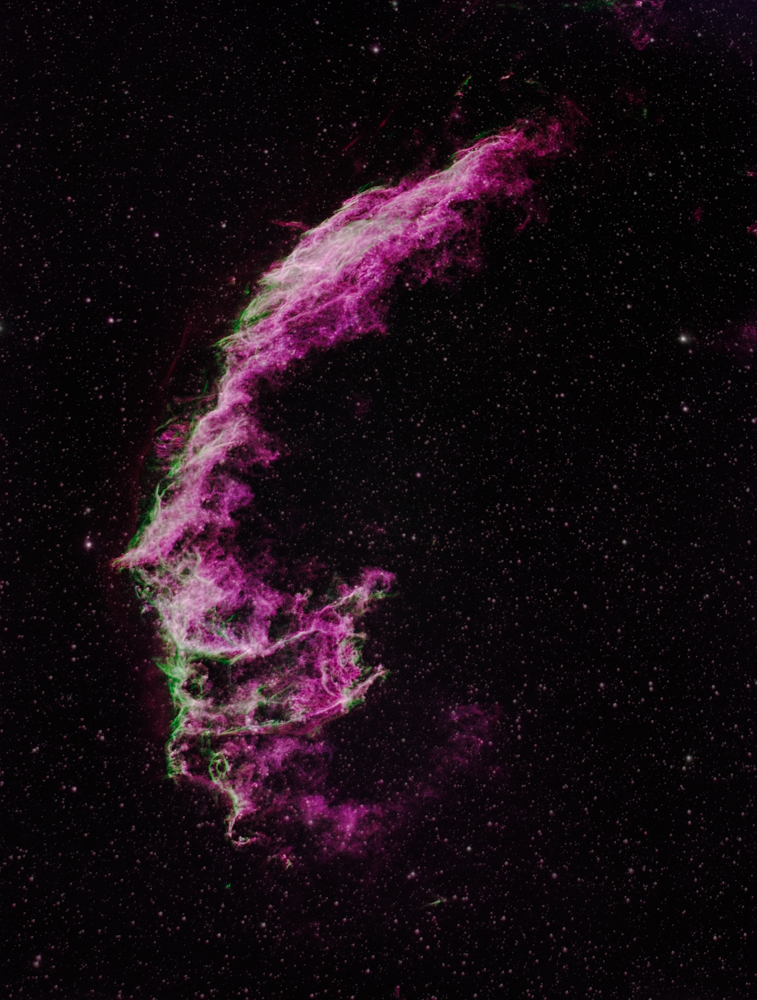 |
| NGC6992 Western Region of the Supernova Remnant (H-alpha + O-III + S-II) w/600mm f/4 - 6 hours total integration time [8/9 to 8/20/2019] |
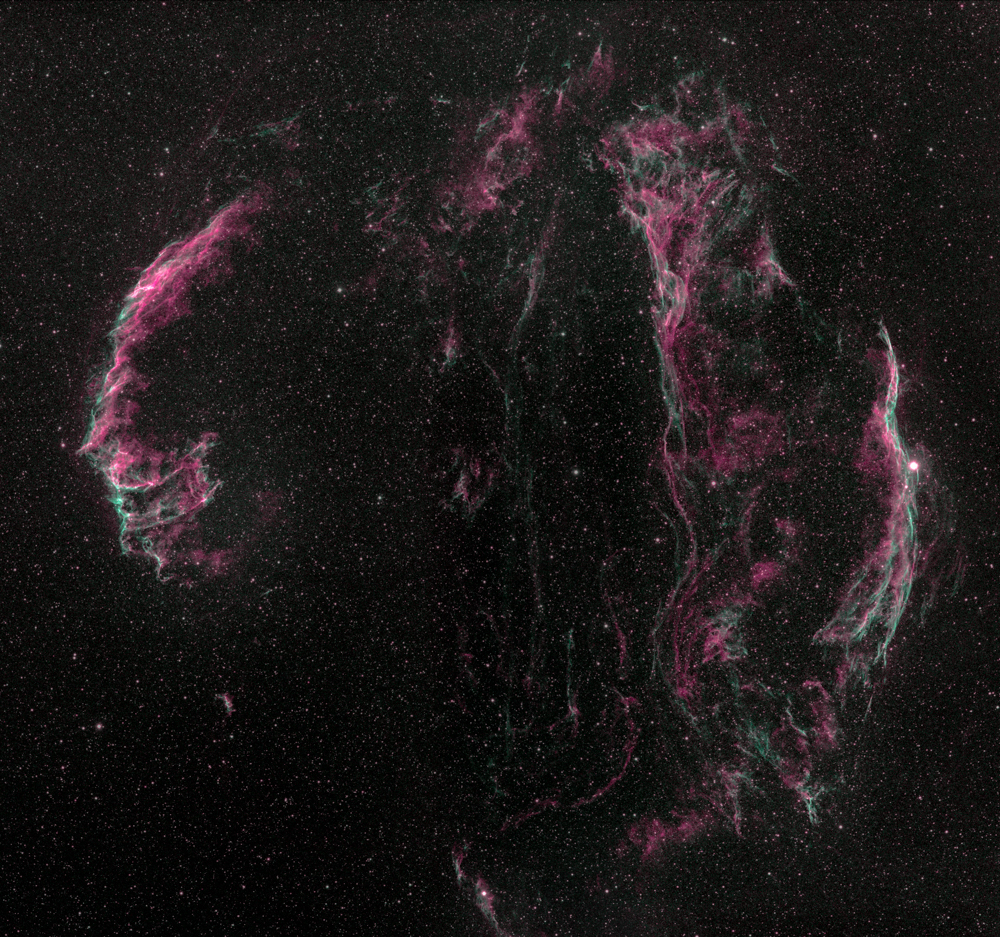 |
| NGC6960 Supernova Remnant Version 2 - Mosaic (H-alpha + O-III) w/300mm f/4 Mosaic Panels Combined in Astro Pixel Processor, Star Reduction in StarNet++ [7/26/2019] |
| Careful, the full resolution image is 28Megs :) |
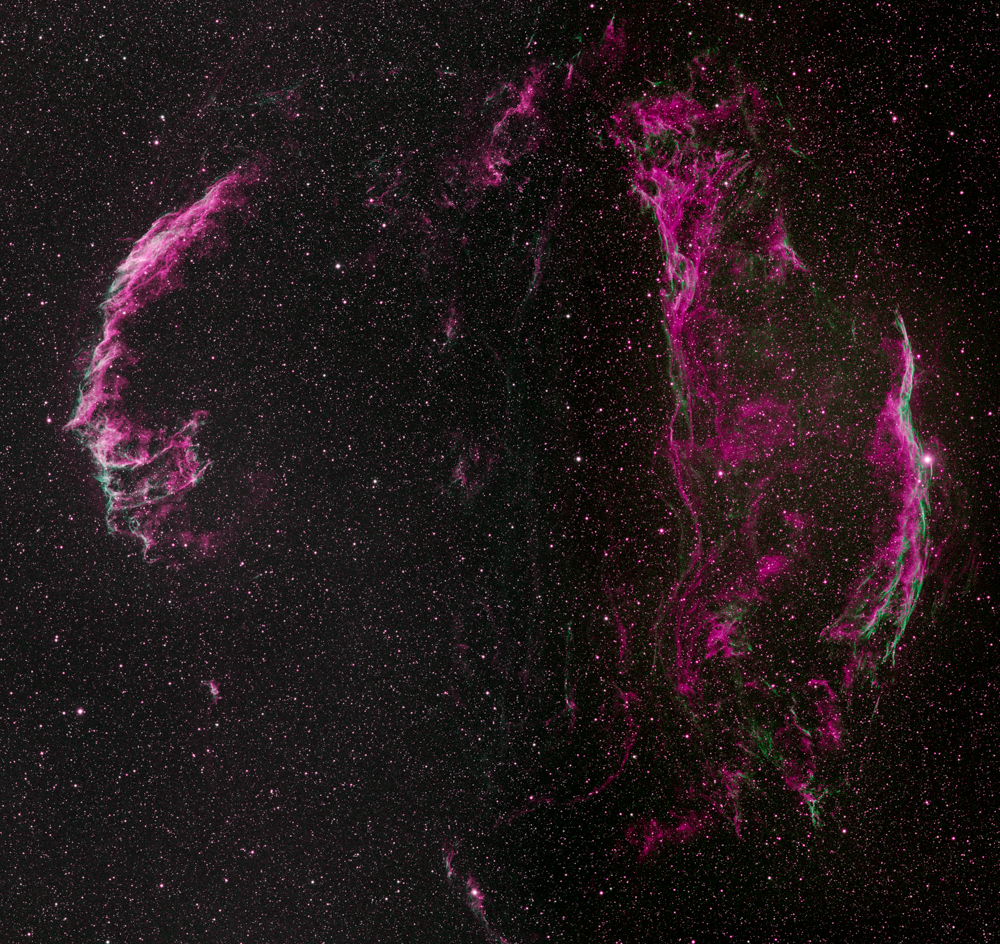 |
| NGC6960 Supernova Remnant - Mosaic (H-alpha + O-III) w/300mm f/4 [7/12/2019] |
| Careful, the full resolution image is 28Megs :) |
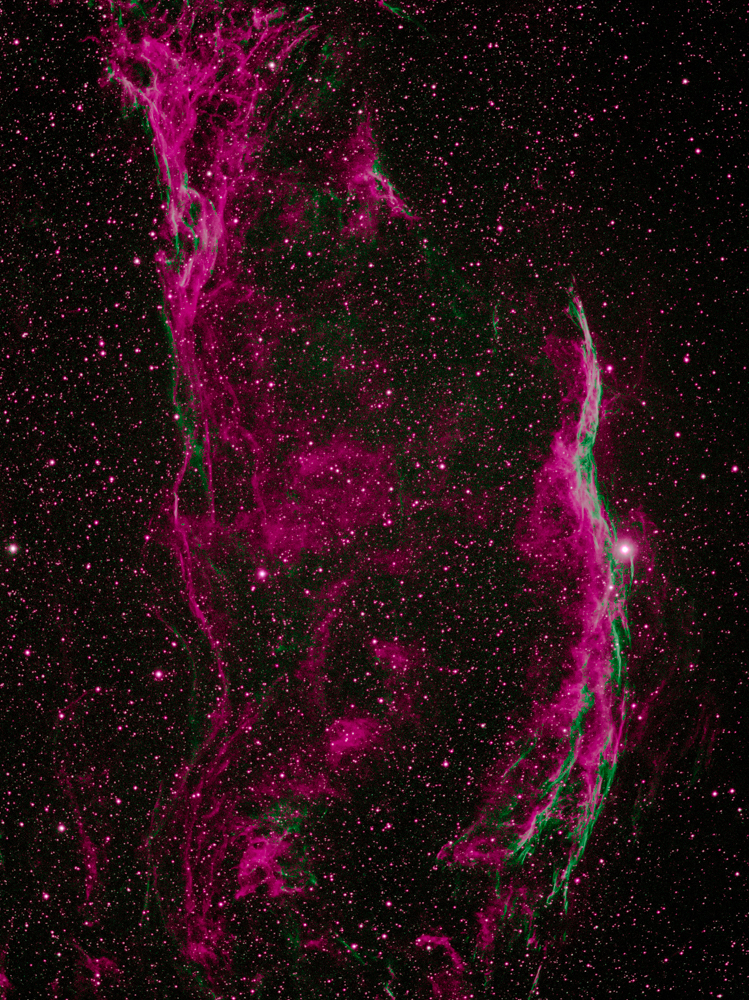 |
| NGC6960 - Veil Nebula (H-alpha + O-III) w/300mm f/4 [7/8/2019] |
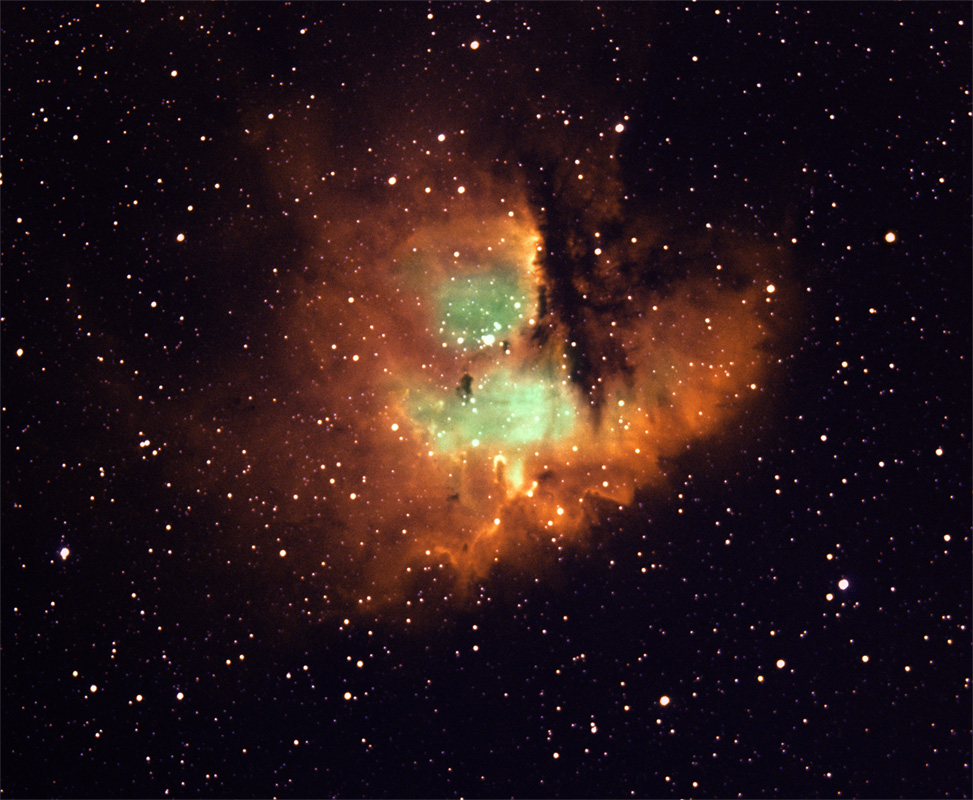 |
| NGC281 - PacMan Nebula (H-alpha + O-III) w/600mm f/4 + 1.4xTC (840mm f/5.6) and Autoguiding [6/22/2019] |
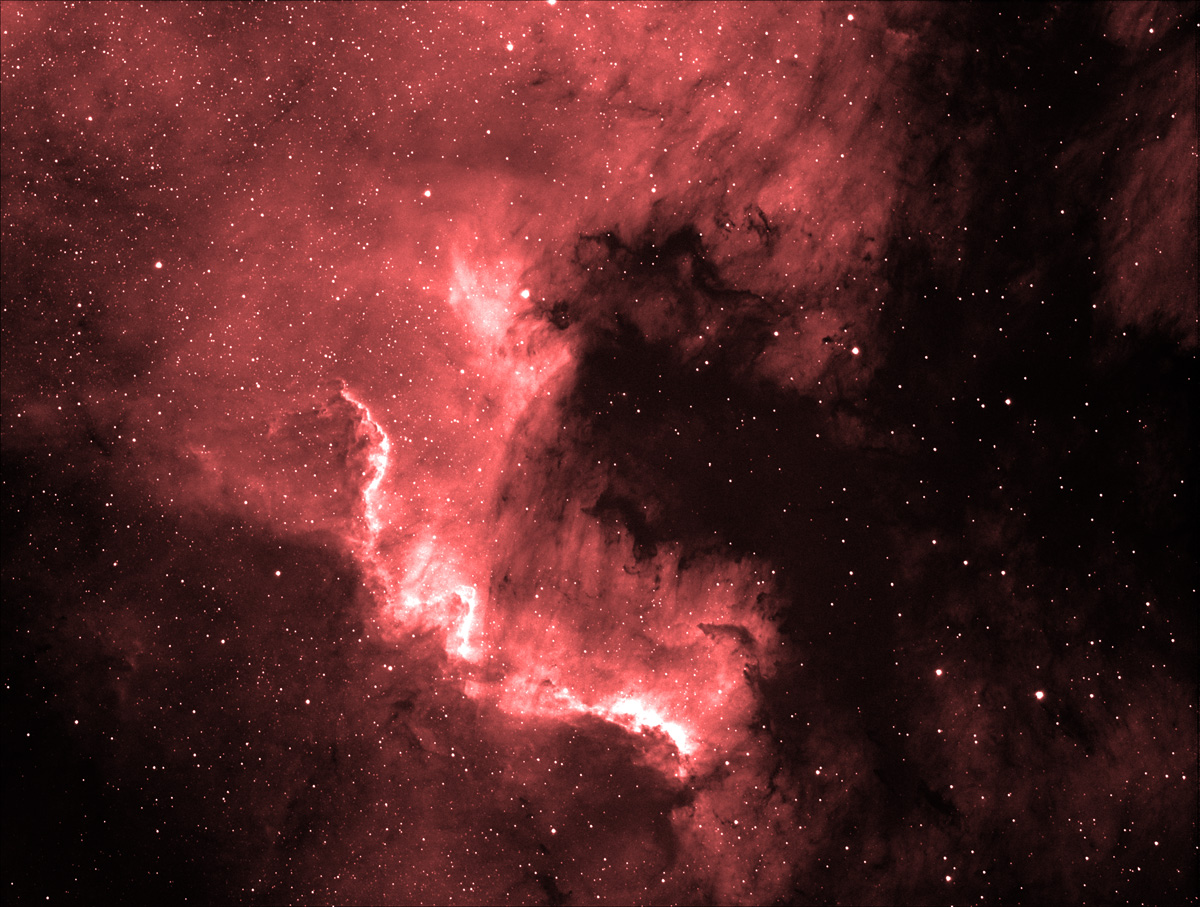 |
| NGC7000 - North American Nebula (H-alpha) w/600mm f/4 and Autoguiding [6/11/2019] |
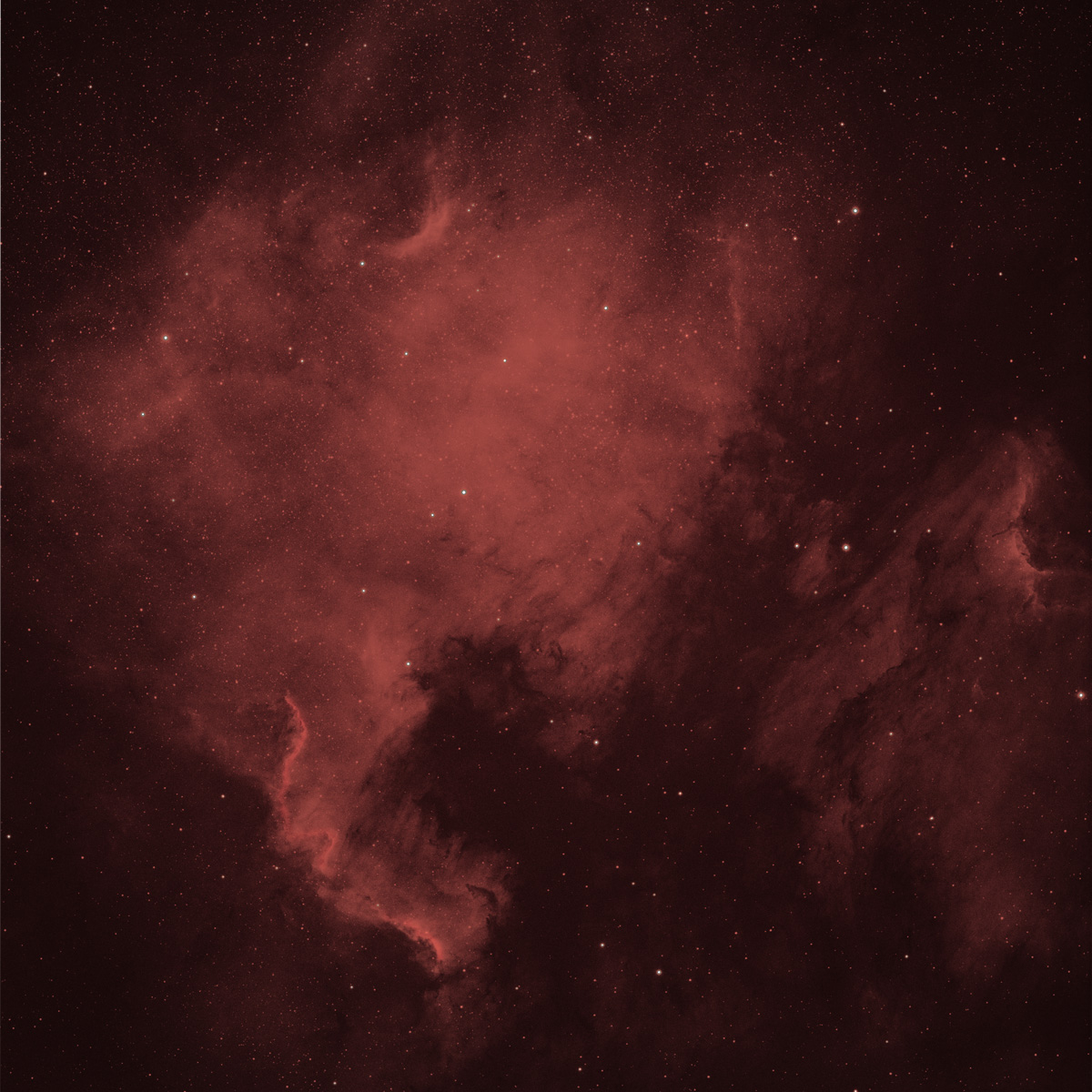 |
| NGC7000 - North American Nebula (H-alpha) [6/1/2019] |
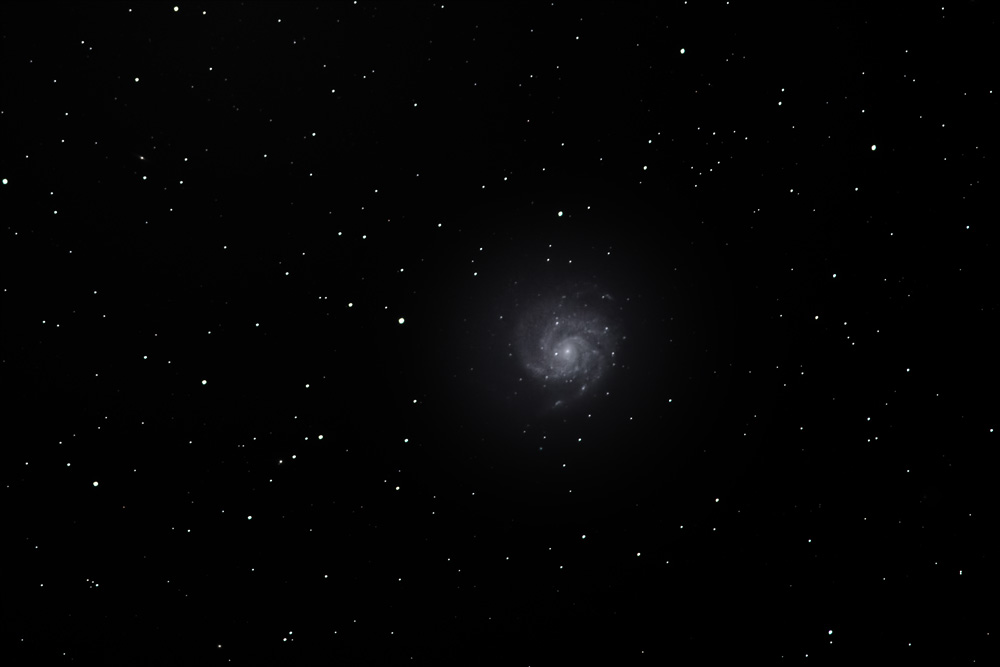 |
| M101 - Pinwheel Galaxy [4/22/2019] |
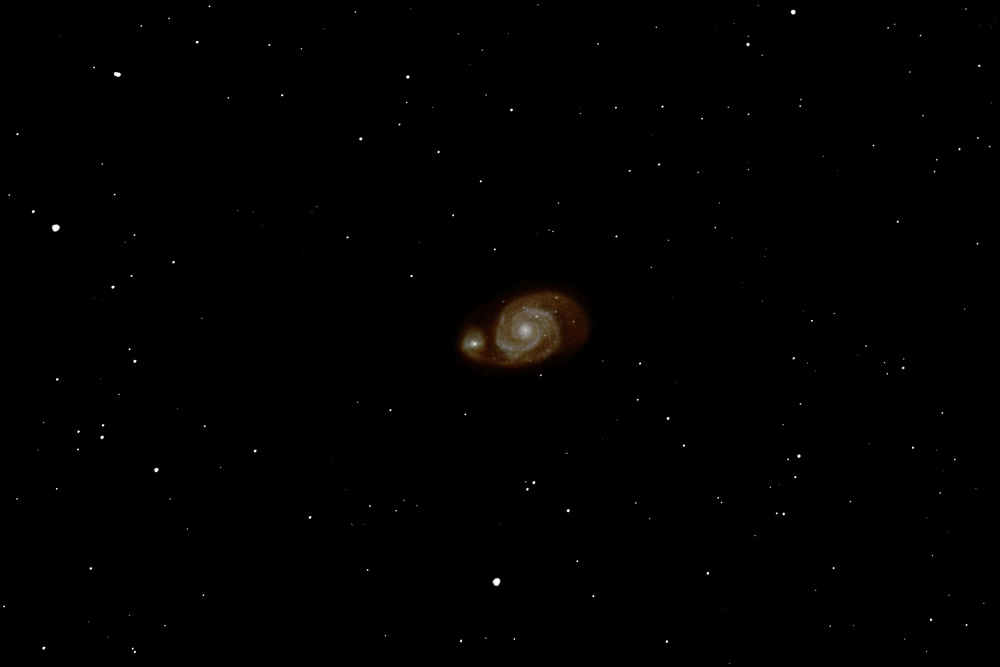 |
| M51 - Whirlpool Galaxy [4/15/2019] |
 |
| Orion Nebula [3/24/2019] |



























